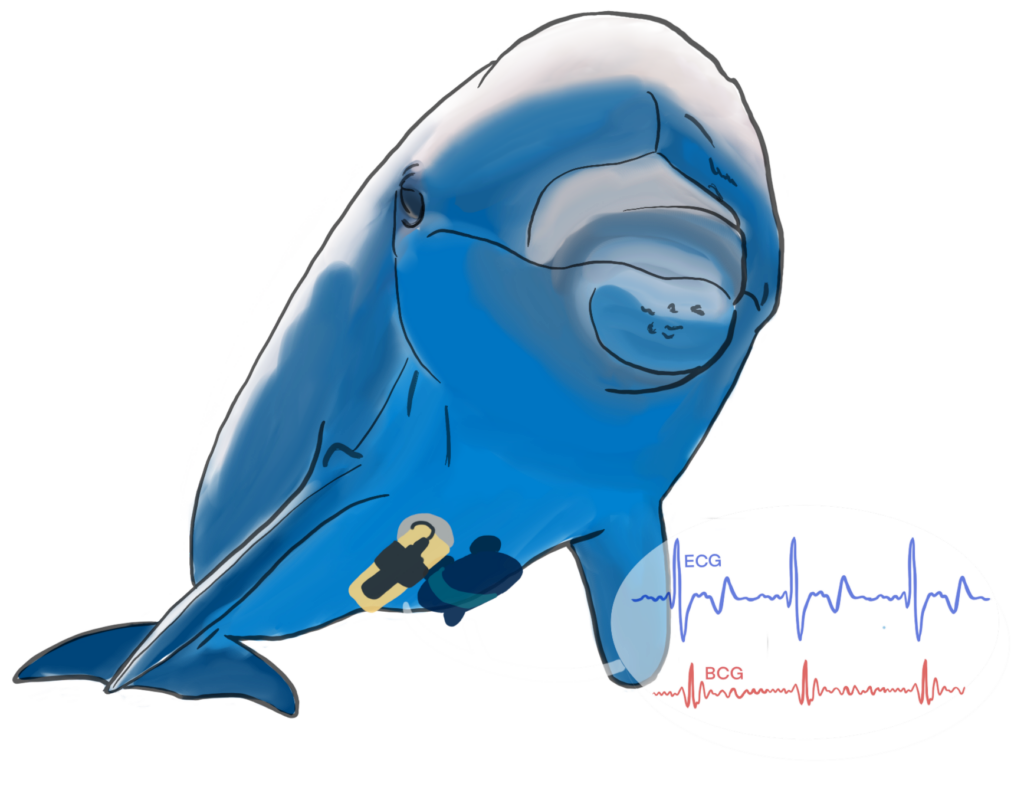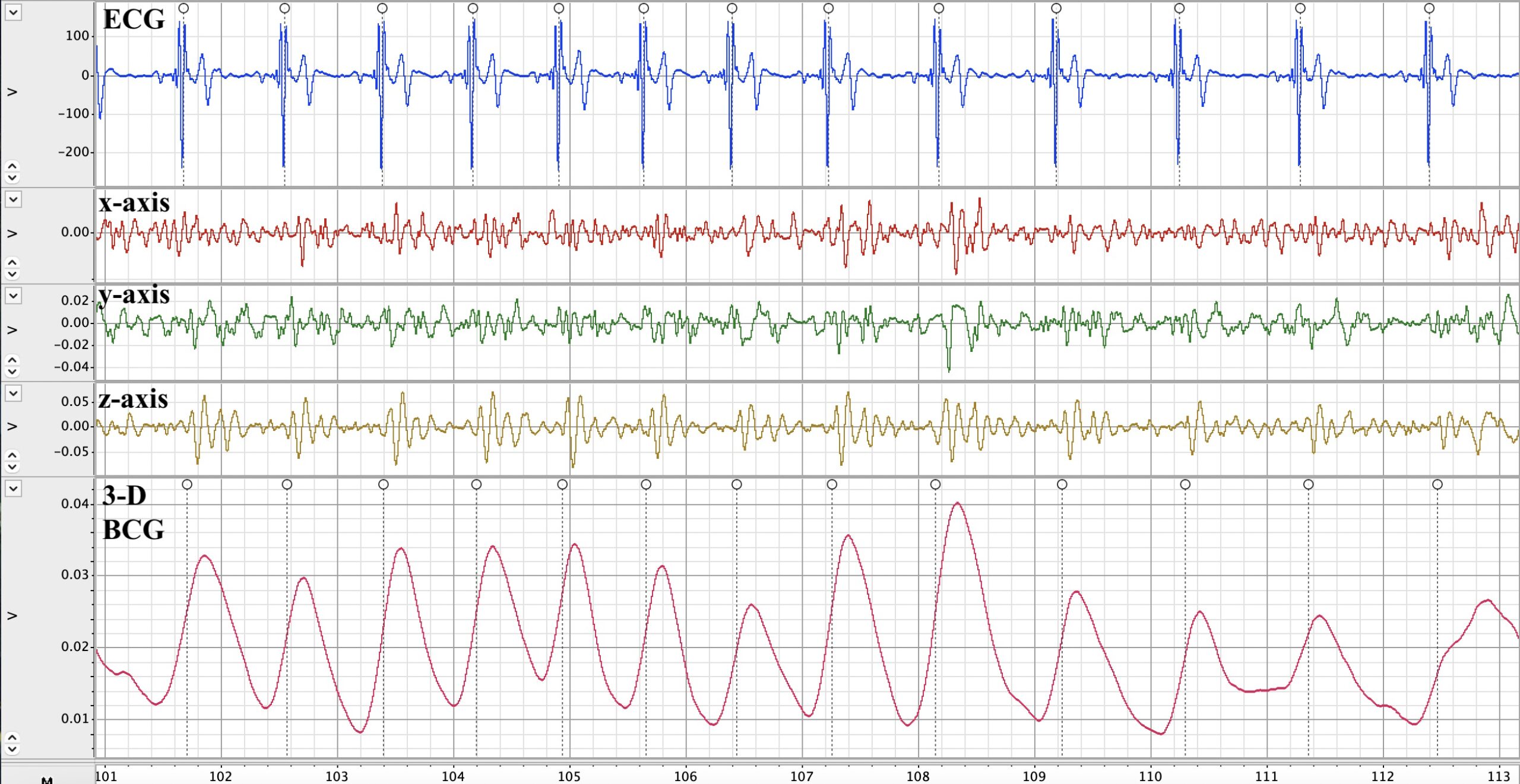Cardiac physiology in dolphins
Aims
Gathering essential eco-physiological data from free-ranging animals is challenging, even though the use of bio-logging devices have evolved tremendously. Recording electrocardiograms (ECG) is even more challenging when conducted in salt water as the signal will tend to dissipate.
ECGs have been collected on several free-ranging and captive species (emperor penguins, California see lions, killer whales, blue whales, bottlenose dolphins…). Studying cardiac physiology is fundamental when we try to understand the mechanisms underlying cardiological functions, cardiac health, or to investigate the dive response, and the metabolic rate.

Another potential modality for measuring heart rate is ballistocardiograms (BCG). BCGs are measured using acceleration sensors which captures the movement of heart as it is beating.
The BCG method was explored as a proxy to measure the instantaneous heart rate of bottlenose dolphins.
- Investigate the best placement on the animal for the device to get clear acceleration heart-beats.
- Test the best analytical method (one-dimensional or three-dimensional) for the ballistocardiogram to measure the instantaneous heart rate (ifH).
- Evaluate the accuracy of the ballistocardiogram to measure ifH compared to the electrocardiogram.
